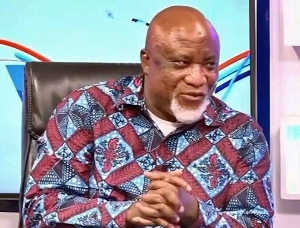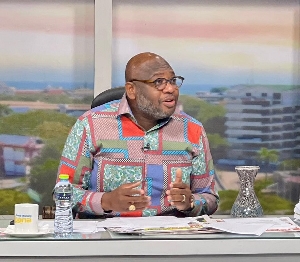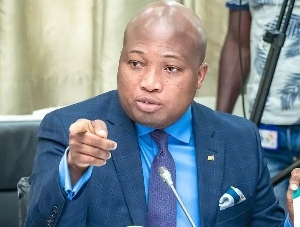 Okuapeman has demonstrate to the rest of the country that they are more united
Okuapeman has demonstrate to the rest of the country that they are more united
It was a very colorful ceremony at Akropong-Akuapim on the 5th December 2017 – The traditional capital of the Akuapeman and the Akuapim North Municipality of the Eastern Region – When the Queen mother of the Okuapeman Traditional Area, Nana Afua Nketiaa Obuo II together with Nana Kwesi Omenako II the Asonahene of the Okuapeman Traditional Area and the Adum Hene-Nana Addo payin followed the due process to install a new Okuapehene.
The candidate was in the name of Fredrick Kwesi Akuffo giving credence to Akwapims noted for in the country noted for its calm and civil co-existence.
Okuapeman has a great opportunity to demonstrate to the rest of the country and the world at large that they are more united, have fellow-feeling, orderliness and respect for authority and due process. Indeed, Okuapeman has the opportunity to solidify its reputation as “home of discipline”.
The tension and anxiety this time round was when the Bamuhene arrogated powers to himself and single-handedly also tried installing a candidate a second candidate, Nana Kwesi Ohene Kessieh, who is decorated with tattooed arms to waist as the next occupant of the sacred seat.
If installed, this would be a radical shift from the immediate past Omanhene, the late Oseadeeyo Addo Dankwa III, who was installed the Paramount Chief of the Akuapem Traditional Area in 1974 at the age of 44 and reigned continuously for 41 years before passing in August 2015.
The late King of the Akuapem Traditional Area held the "sacred seat" of the Akuapem-Asona – one of the seven major Akan clans – for 41 years. He is, therefore, reputed to be the longest reigning Okuapehene since the formation of the Akuapim State.
But the Bumuhene with no locus in Okuapeman tried defying the time-tested tradition of disqualifying royals ‘tainted’ by scars and marks on the skin.And were defiant and insisting on imposing a young candidate with tattoos on the body, which is considered a sacrilege and forbidden in the traditional area. Who has been disqualified?
Per the tradition and norms it’s the queen mothers role is to appoint an Okuapehene as tradition demands. A 1974 Supreme Court ruling (Nana Addo Danquah III vrs Kwesi Akuffo) which mandates her and the Asona Hene to name a candidate for consideration after consultations with the Royal Sakyabia House.Which they did.
The said Supreme Court ruling also gave a road map for the nomination and installation of a new Okuapehene (upon the death of Nana Addo Danquah), directing that the succession goes to the royal Sakyabia House, which then nominates the successor to the Okuapehemaa. According to the road map, the Okuapehemaa would, subsequently, inform the kingmakers that they now have a legitimate candidate for consideration.
All these process she followed. But this is not because of the usual controversy and bitter litigation over royal lineage of the contesting candidates and the legitimacy of the royal families vying for the new Okuapehene. Disrespecting what the Okuapehemaa has already done.
Some traditionalists in the area have been explaining that the process of appointing and enstooling a chief say has been characterized by dispute over the past 100 years.
Once a stool or skin becomes vacant, greed and self-interest take the better part of the kingmakers/elders (the very people who should know better) and we see them slapping truth in the face, side-stepping custom, tradition and laid down process which end up creating confusion on which and from which they gladly feed at the expense of peace and development of their communities.
That is what is happening in Akropong now. Per rotational basis based on the announcement of the demise of the Okuapehene, three royal houses – Nketia, Amma Ogyaa and Sakyiabea – of Akropong clothed with the royal lineage to choose and install the successor.
Currently, it’s the turn of the Sakyiabea royal family to choose the next Okuapehene. This, everybody in Okuapeman accepts.
The current controversy has been ignited by not only the choice of the next Omanhene. There’s also the lingering issue of Abrewa Tia.
The Abusaupayin of the Sakyiabea royal families, Nana Obuobisa Newman, of Akropong, resigned his position during the reign of the late Okuapehene, Oseadeeyo Addo Dankwa lll. Soon after the death of the late chief, he came back to saying his mandate was not accepted by the late chief so he is still the Abusuapayin.
Kwesi Akuffo is the biological the son of the Abrewtia Georgina head of (House of Mastrich) who served the late Okuapehene.
Protracted disputes
The Akuapem paramount cry has been characterized by strife and dissension since 1907. Records at the National Archives indicate that in 1895 when Nana F.W. Kwasi Akuffo took over the mantle from his uncle, he struggled to rule until he gave way to Nana Owusu Ansah in October 1907, who also had a difficult tenure till 1914 when he bowed out.
Nana Ofori Kuma II took over in 1914 from his elder brother, Nana Owusu Ansah, and faced similar internal and external wrangling till he bowed out eventually in June 1919.
For four years, there was no king in Akuapem; it was not because there was no qualified candidate but because different groups of Osiahene had their interests. Litigation and dissension followed.
Eventually, Nana F.W. Kwasi Akuffo returned to the stool in 1923. He passed away suddenly in 1927. And for three years, there was no king in Akuapem. The problem was whether to allow Lawyer J.B. Koranteng to return or they should look for another person. In 1930, Nana Addo Dankwa II was given the nod as the Omanhene by the government.
Another problem arose. Three of the divisional chiefs protested against the installation of Nana Addo Dankwa II. Why? They had their preferred candidate. It took the intervention of the district commissioner for the three divisional chiefs to swear the oath of allegiance to the Omanhene in 1931.
Unfortunately, by December 1931, Nana was taken ill. Nana Yaw Boafo (the Senior Divisional Chief) was made to act as Omanhene. By February 1932, Nana was gone.
The one to succeed Nana Addo Dankwa II became another problem. Lawyer J.B. Koranteng was still in the race. Another group also wanted Lawyer Offei Darko Awere.
Sadly, on May 17 while the Asiahenefo had gathered in the palace to present Lawyer Darko Awere as the Omanhene elect, another group was parading Lawyer Koranteng in the street as Omanhene.
Lawyer Awere, on May 20, wrote to the district commissioner to decline the offer.
With no option for Asiahenefo now, like Nana Kwasi Akuffo, Nana Ofori Kuma II was reinstalled as Omanhene and, interestingly, within that era, he ruled the longest: from 1932-42. Nana Kwadade II followed and ruled from 1942-1945.
In 1945, with the exit of Nana Kwadade, Lawyer Offei Darko Awere who declined the nomination in 1932 due to disputes, this time accepted the offer as Omanhene with the stool name, Nana Kwame Fori II. Soon afterward tension mounted. By 1949, he had abdicated.
Nana Twumhene ascended the Ofori Kuma Stool from 1949-1959 and gave way to Nana Kwame Fori II again from 1959. In 1974, which is recent history, many people saw what happened when Oseadeeyo was nominated and enthroned as the paramount chief.
Reign of Oseadeeyo Addo Dankwa
As a scholar interested in the history of his ancestors, Oseadeeyo did his best to preserve that unity even though there were challenges, especially with the imbroglio in Akuapem in 1994. Peace prevailed in Akuapem in 2013 and last year, all chiefs and people celebrated the 40th anniversary of Oseadeeyo's reign together.
The contribution of Oseadeeyo to peace in Akuapem should not be destroyed. We should change the direction of history in our time. Since there is a Declaration Order Customary Law (Akwapim State) Order, 1960 (LI 32) made under Act No 20 of 1958, Let the LI work.












